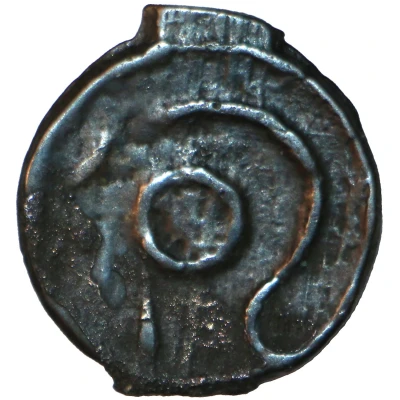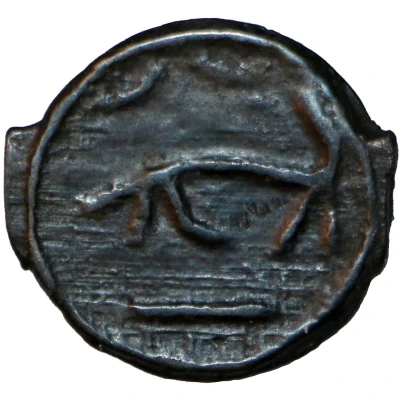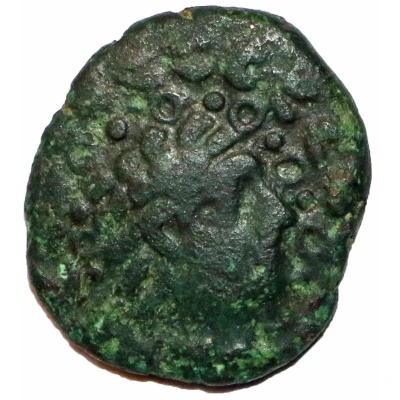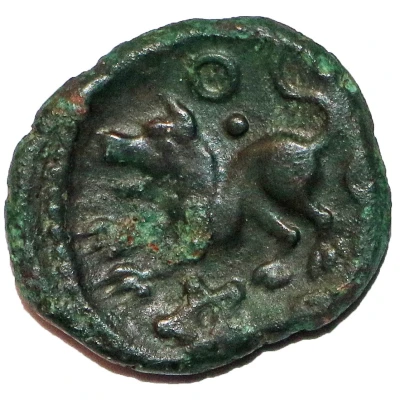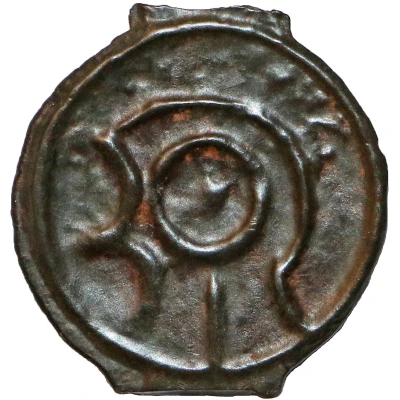
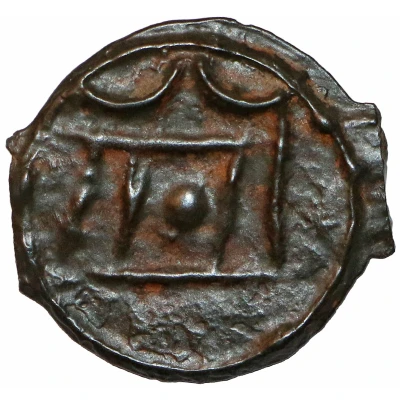

© John Conduitt (CC BY-SA)
Bronze Unit "Cantian D" 90 BC - 50 BC
| Bronze | 1.6 g | 17 mm |
| Issuer | Cantii tribe (Celtic Britain) |
|---|---|
| Type | Standard circulation coin |
| Years | 90 BC - 50 BC |
| Currency | Stater |
| Composition | Bronze |
| Weight | 1.6 g |
| Diameter | 17 mm |
| Shape | Round (irregular) |
| Technique | Cast |
| Orientation | Variable alignment ↺ |
| Demonetized | Yes |
| Updated | 2024-10-09 |
| Numista | N#364543 |
|---|---|
| Rarity index | 95% |
Reverse
Celticised figure of bull made up of curved or straight lines, pellet in centre
Comment
Early Uninscribed Coinage (c.120-c.50 BC)Includes rounded and angular bull types. Cantian D is characterised by smooth fields, larger flans and smaller central pellets. Earlier coins (Cantian C) have striations in the fields. Later coins (Cantian E) are smaller. Van Arsdell lists several variations of Cantian D:
- three dots in centre of Apollo's head (V 122; ABC 162)
- rounded bull (V 123-125; ABC 165)
- two crescents below exergual line under bull (V 127; ABC 168)
- angular bull (V 129-133; ABC 171)
Interesting fact
One interesting fact about the Cantian D coin is that it features a unique design that sets it apart from other coins of the same era. The obverse side of the coin depicts a stylized horse, while the reverse side features a wheel or circle with four spiral arms radiating from the center. This distinctive design has led some numismatists to speculate that the coin may have had a specific symbolic or religious significance to the Cantii tribe.
